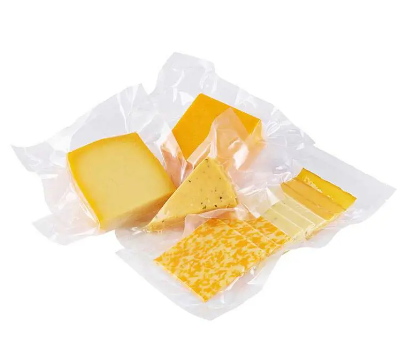Food vacuum packaging bags are very widely used in our lives, it is in direct contact with the food we eat, so the inspection requirements are very strict. Below, Boya New Material, a China leading vacuum packaging bags manufacturer, will introduce you to the inspection requirements in detail.
1. Hygiene inspection
In flexible packaging its hygiene is very important, because its direct contact with the food we eat every day, so it is the primary standard of inspection is hygiene qualified. Including evaporation residue (acetic acid, ethanol, hexane), potassium permanganate consumption, heavy metals, decolourisation test. Evaporation residue is a reflection of the food vacuum packaging bags in the use of vinegar, wine, oil and other liquids when precipitated residue, the possibility of heavy metals, residue and heavy metals will have a negative impact on human health, in addition to residue will directly affect the food colour, fragrance, taste and other edible quality.
2. Safety inspection
The raw materials and additives used in the custom vacuum seal bags should meet the relevant national quality requirements, to ensure that the human body will not become toxic and other harm.
3. Degradability test
The type of degradation of the product can be divided into photodegradable, biodegradable, environmentally degradable, if the degradation performance is good, the bag will be in the light and the joint action of micro-organisms, their own fracture, differentiation and degradation, and eventually become crumbs, for the natural environment to accept, to avoid white pollution
4. Appearance inspection
Food vacuum packaging bags appearance appearance should be flat, no scratches, burns, bubbles, broken oil and creases, heat sealing flat, no false seal. There should be cracks, porosity and separation of the composite layer under the film. No impurities, foreign bodies and oil stains and other pollution.
5. Specification inspection
Its specification, width, length and thickness deviation should be within the specified range.
6. Physical and mechanical properties inspection
That is, the quality of the bag is to be good. The physical and mechanical properties test includes tensile strength and elongation at break. Reflecting the product in the use of the process of tensile capacity, if the product tensile capacity is poor, it will be easy to rupture, damage phenomenon in use.
Classification of food vacuum packaging bags materials and uses
1.BOPP/LLDPE two-layer composite: moisture-proof, cold-resistant, low-temperature heat-sealing tension, mainly used for instant noodles, snacks, frozen snacks, powder packaging, etc.
2.BOPP / CPP two-layer lamination: moisture-proof, oil-resistant, high transparency, good stiffness, mainly used for instant noodles, biscuits, bad fruit, all kinds of light food packaging.
3.BOPPVMCPP lamination: moisture-proof, oil-resistant, oxygen barrier, light blocking, good stiffness, suitable for all kinds of dry food, fried food and sliced food.
4. BOPP/ VMPET/ LLDPE three-layer composite: moisture-proof, oxygen barrier, light blocking, for all kinds of food, rice snacks, snacks, tea packaging.
5. PETICPP two-layer lamination: moisture-proof, oxygen barrier, aroma preservation, high-temperature cooking resistance, used for food containing wine, fragrant food.
6. PETPETICPP triple-laminate:Moisture resistant, high temperature resistant, easy to seal, commonly used for powder packaging, soy sauce, liquid, shampoo.

Post time: Nov-10-2022

